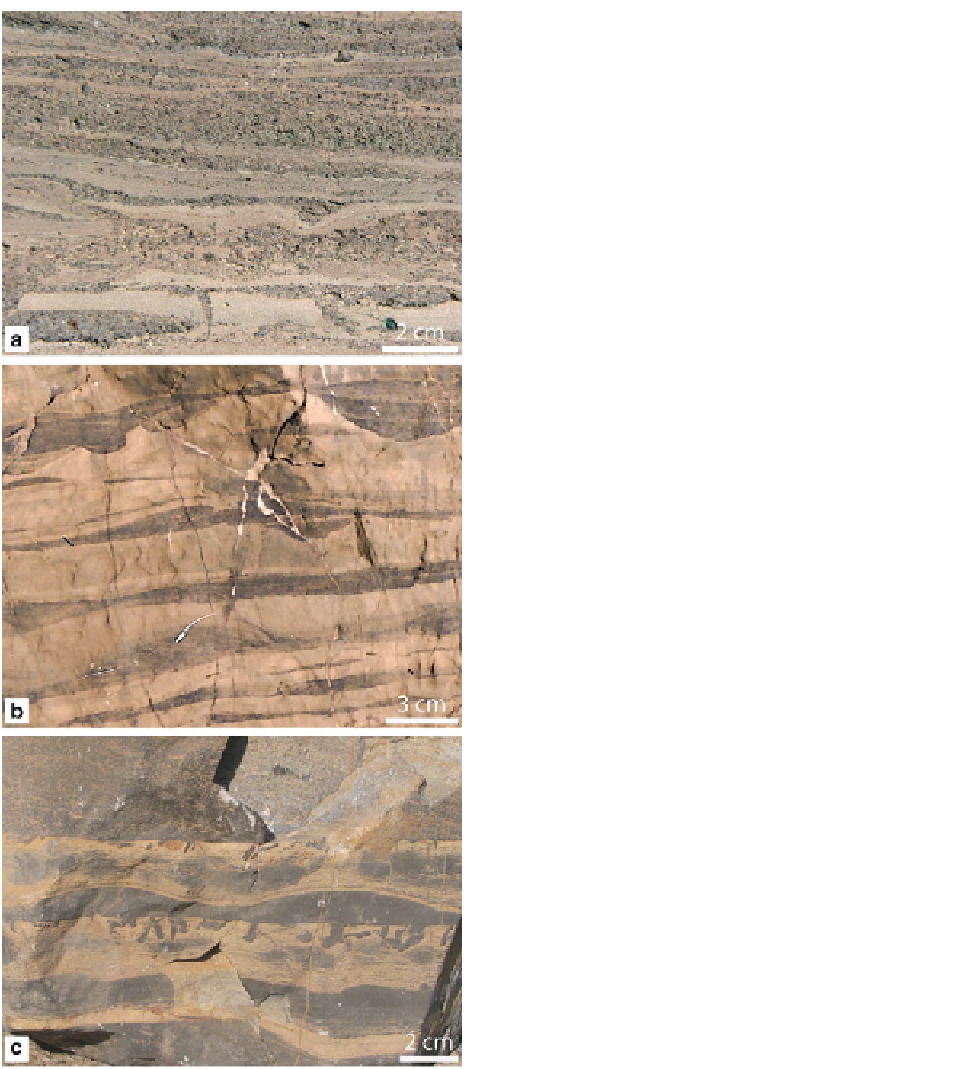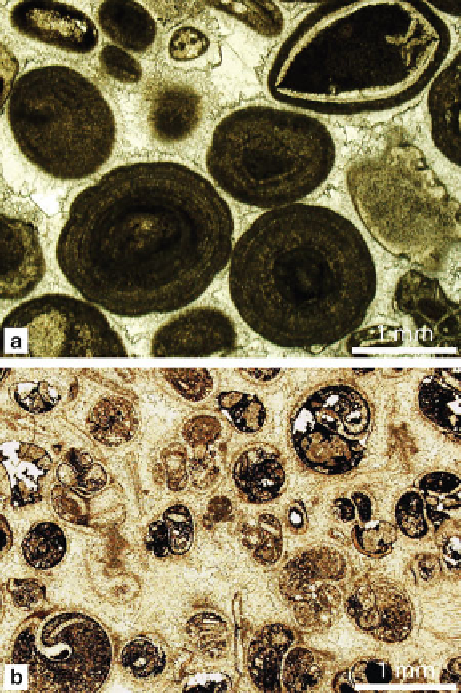Geology Reference
In-Depth Information
Fig. 21.13
(
a
) Fibrous and irregular sparry calcite cement
fringes (beachrock cement) in a bioclastic ooid grainstone inter-
preted as a barrier beach facies; Upper Mississippian Negli
Creek Member of the Kinkaid Formation, southern Illinois.
(
b
) An example of a beach ridge grainstone composed solely of
small gastropod shells with void-fi lling hematite and calcite
cements. Note the irregular radial fi brous beachrock cement
fringe on the grains; Lower Triassic lower member of the Elika
Formation in the central Alborz Mountains, northern Iran
Fig. 21.12
Planar, wavy and ripple bedding in mixed carbonate-
siliciclastic and pure carbonate intertidal deposits: (
a
) Millimeter- to
centimeter-thick tidal lamination in interlaminated lime mudstone
and quartz sandstone (
gray
). Note disrupted laminae, intraclasts,
smooth-walled sand-fi lled desiccation cracks and lenticular bed-
ding in the lower part; Mississippian Bayport Formation, Bayport,
Michigan. (
b
-
c
) Intertidal heterolithic interlayering of dolomudstone
and grainstone in the Middle Cambrian member 2 of the Mila
Formation from the Alborz Mountains, northern Iran: (
b
) Interlayered
wavy and rippled grainstone and dolomudstone containing lenticular
bedding. (
c
) Wavy, ripple and lenticular bedding. Note the vertical and
sub-vertical burrows in the middle of the photograph that was fi lled
Even though shallowing-upward cycles dominate
the peritidal successions, deepening-upward and deep-
ening- to shallowing-upward trends or aggradational
cycles consisting of a single facies are also present (see
Fig.
21.3d
for an example) (e.g. Burgess
2006
; Spence
and Tucker
2007
; Bosence et al.
2009
; Zecchin
2010
)
depending on rates of deposition and sea level fl uctua-
tions during the course of their development. Some
ancient successions consist of stacked cycles charac-


